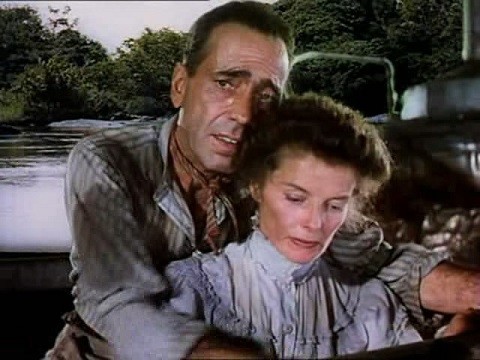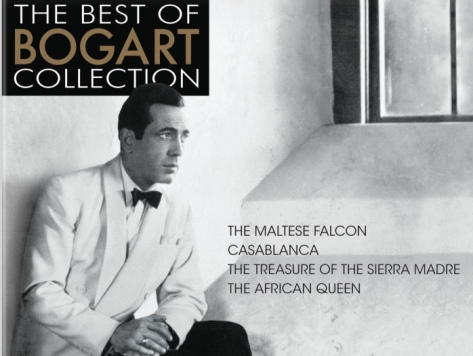My opposition to artistic censorship doesn’t mean I can’t appreciate how censorship in the form of the old Hollywood Production Code resulted in an art form vastly superior to what we see from the motion picture industry today. Once you remove limits from art, everything is art; and then of course nothing is art.
Contrary to the conventional wisdom, movies from Hollywood’s Golden Age did in fact touch on all the “edgy” subjects that films touch on today, including homosexuality, incest, rape, adultery, illicit sex, violence, crime… It is just that with the restrictions imposed by the Production Code, from a purely artistic point of view, in general (there are always exceptions) Golden Age movies did a better job of presenting those subjects. They were smarter and more nuanced as opposed to in-your-face.
Granted, some modern artists like Martin Scorsese create genuine works of cinematic art through the use of R-rated shock and awe. Overall, though, in five-hundred years, I’m convinced that like Beethoven and Mozart, Hollywood’s Production Code-era will be much more appreciated than the on-the-nose era that came after.
The four timeless, classic Humphrey Bogart films included in this just-released Warner Brother’s “Best of Bogart Bluray Collection” illustrate my point better than most.
Let’s go in chronological order…
The Maltese Falcon (1941)
Three of the four films in this collection are directed and written or co-written by legendary Oscar-winner John Huston. “The Maltese Falcon” was Huston’s first film as a director (he had already made a name for himself as a screenwriter), and the one that set him and Humphrey Bogart on a lifelong collaboration that would yield five more films, three of which are unqualified masterpieces: “The Maltese Falcon,” “The Treasure of the Sierra Madre” and “The African Queen,” which are all included in this collection.

Bogart plays Sam Spade, a darkly cynical, unsentimental private detective with his own code of ethics who takes on what look to be a run-of-the-mill case and ends up having to track down who murdered his partner before the cops finger him. Along the way, Spade runs into a rogues gallery of some of the greatest characters and character actors ever assembled in a single film.
“The Maltese Falcon” is my idea of porn — especially those scenes packed with Movie Gods. Just try to imagine going back in time and entering a soundstage for a day’s shooting that includes Bogart, Mary Astor, Peter Lorre, Sydney Greenstreet, Elisha Cook Jr., Ward Bond, and Barton MacLane.
On top of crackling tough-guy dialogue (courtesy of Huston and Dashiell Hammett, who wrote the novel), extraordinarily beautiful black and white cinematography, and one memorable scene after another, “The Maltese Falcon” also explores themes involving adultery and homosexuality.
After Spade’s partner is murdered, we learn that he has been involved in a sexual affair with his partner’s needy wife. The legal and emotional complications this brings into Spade’s life are nothing compared to what a bastard Spade comes off as while dealing with his newly-widowed mistress. It was obvious he had preyed on her insecurities for sex and now has no use for her when she needs him most.
Kasper Gutman aka The Fatman (Greenstreet in his film debut) is almost certainly a homosexual and it is more than hinted at that he’s sexually involved in a pedophilic relationship with Wilmer (Cook), a man thirty-odd years younger, who Gutman claims to think of as his son. Gutman also attempts to seduce Spade on at least one occasion.
Be sure to catch the director’s dad, Oscar-winner Walter Huston, in a plot-turning cameo.
Casablanca (1941)
I first saw “Casablanca” some thirty-five years ago and it left me pretty cold. It wasn’t that the Best Picture winner had been over-hyped. It was that all those “Play it again, Sam” spoofs and jokes seemed to be everywhere at the time. By the time I finally saw “Casablanca” it felt played out and tired. I pretty much knew everything about the movie beforehand.

More than fifteen years would pass before I saw it again and belatedly discover what all the fuss was about. Every character, scene, and line of dialogue is perfection. The themes, however, are why I return to “Casablanca” at least twice a year. Every time you watch it, there is something you missed before — a line of dialogue, a camera move, or a look from an actor that reveals something new or adds a layer of depth to what you already knew.
“Casablanca” is also a film about adultery. Rick (Bogart) and the married Ilsa (a never more beautiful Ingrid Bergman) have sex in his office-apartment. You don’t see it. Instead, director Michael Curtiz cuts to a light tower. But it happened.
“Casablanca” is also about women who sell their sexual favors to “poor corrupt officials” in order to get out of the country. Captain Renault (Claude Rains) is more than a charming scoundrel, he also exploits desperate women for sex. The scene at the roulette table where Rick saves a young newlywed from this fate (and the comical look on Renault’s face as it happens) never fails to make me laugh and cry.
The Treasure of the Sierra Madre (1948)
This is my favorite film in the collection and my favorite Bogart film after Howard Hawks’ “To Have and Have Not” (1944).

“The Treasure of the Sierra Madre” is of course a visceral character study about the soul-blackening poison of greed. Huston (who would win the Oscar for his directing and screenplay) also refuses to turn away from the brutal violence that oftentimes befalls the greedy.
Though there is no R-rated Tarantino-style violence, Huston instead lets our imaginations fill in the gaps to great effect. The softer scenes of violence involve the summary execution of bandits by firing squad. But watching Fred C. Dobbs (Bogart) get his just-desserts at the ugly end of a machete is even more stomach-churning than Dobbs’ attempt to viciously murder his partner (Tim Holt) in cold blood.
Nothing, though, prepares you for one of the toughest fight scenes ever put on film involving a beefy Barton MacLane against Bogart and Holt. Everything about the way Huston shoots and stages the scene is unsettling. It lasts way past your comfort level and the only sounds are of three desperate men grunting, breathing heavily, and exchanging blows.
The wages of sin.
The sequence that always leaves me sick to my stomach has no action, just dialogue. It’s when Bogart, Holt, and the old prospector (played by Walter Huston, who won a Supporting Oscar) put aside their quarrels to quietly and rationally decide to murder a man (Bruce Bennett).
“Treasure of the Sierra Madre” is about a perfect a movie as has ever been made.
The African Queen (1951)
Director and co-writer John Huston’s monumental pairing of Bogart and Katherine Hepburn is the least thematically controversial of the four films in this collection. You could argue that the story of a mismatched couple who find romance during a suicide mission has something to say through Hepburn’s Rose about religious piety but that’s probably taking it a bit far.

“The African Queen” is really about two middle-aged people who have been alone too long. As a result, she’s too prim and regal and he’s a drunken, selfish misanthrope. Together they smooth the other’s sharp edges and make it work.
This is one of those perfect films that sucks you in, casts a spell, and holds you firm for two full hours. You also feel a sense of loss when it is over.
—
The Bluray transfers of all four films are stunning. The extras are aplenty. The first three are in glorious black and white. “The African Queen” is shot Technicolor and the Movie Gods made Bluray to bring out the glory in Technicolor in a way no other form of home video ever could. Breathtaking.
All four films are also perfect … and no amount of nudity, blood, nihilism, or overt sexuality would have done anything other than undermine their artistry.
The Best of Bogart Bluray Collection is available at Amazon.com.
Follow John Nolte on Twitter @NolteNC

COMMENTS
Please let us know if you're having issues with commenting.